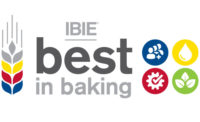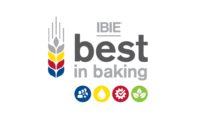Sustainable packaging for snack food and wholesale baking products

RomoloTavani via iStock / Getty Images Plus
By: Maria Ferrante

Maria Ferrante
As consumer awareness increased, snack and bakery product developers began investigating new materials to package products. The following are five finding their way onto store shelves at an increasing rate.
- Post-consumer recycled (PCR) - PCR resin is the lowest hanging fruit and easiest to adopt. Reconstructed packages from recycled plastic are used for making packages like water bottles, sheets, films, and other containers. PCR is now in high demand as many companies have set goals for PCR content in their packaging. Industries are rapidly adopting it as secondary packaging.
- Bioplastics - The number of available products made from bioplastics prepared from biodegradable, renewable resources such as starch, proteins, and polylactic acid (PLA) has exploded recently. Polyethylene terephthalate (PET) has the highest recycling rate of all the plastics used for packaging. Typically produced from feedstocks, it can replace some of its petroleum-based components with bio-based alternatives. Bio-based PET is a relevant, economic, and effective form of plastic packaging. It contains an elastic texture with strong fibers that replace other packaging materials in containers, rigid bottles, and films. Additionally, the materials used for packaging will not compete with a food source. The raw materials are already waste or by-products, such as rice hulls and wood chips.
- Edible packaging - Recently, edible packaging became available for commercial use. So far, the polysaccharide chitosan has proven most effective due to its natural antibacterial activities. Chitosan is a sugar that comes from the outer skeleton of shellfish, including crab, lobster, and shrimp. When used in packaging, it is edible and can protect food from multiple mechanisms. It serves as a physical barrier and prevents the direct contact of microbes with food. This material also inhibits the respiratory activity of bacteria by blocking the oxygen supply in the packaging.
- Cellulose packaging - Made from natural sources like hemp, wood, and cotton, cellulose materials are biodegradable and compostable. Food brands, in particular, prefer cellulose packaging because of its moisture-resistant properties making it ideal for snack food and baked goods.
- Antimicrobial packaging – Antimicrobial materials are a newer example of how packaging contributes to sustainability by helping to reduce product waste. However, the cost hinders the development of this type of packaging and the fact that it requires major package and equipment design changes.
No other east coast event will offer such a wide range of state-of-the-art packaging and processing solutions as PACK EXPO East (March 21–23, 2022; Pennsylvania Convention Center). With 400 exhibitors, PACK EXPO East provides a convenient and rewarding opportunity for consumer packaged goods (CPG) and life sciences professionals to explore packaging and processing technology, connect with suppliers, and find the solutions needed to compete in a changing marketplace conveniently located just a drive or train-trip away for most of the east coast. To register or learn more, visit packexpoeast.com. For information about the PACK Ready Health and Safety plan, visit packexpoeast.com/packready.
Looking for a reprint of this article?
From high-res PDFs to custom plaques, order your copy today!





